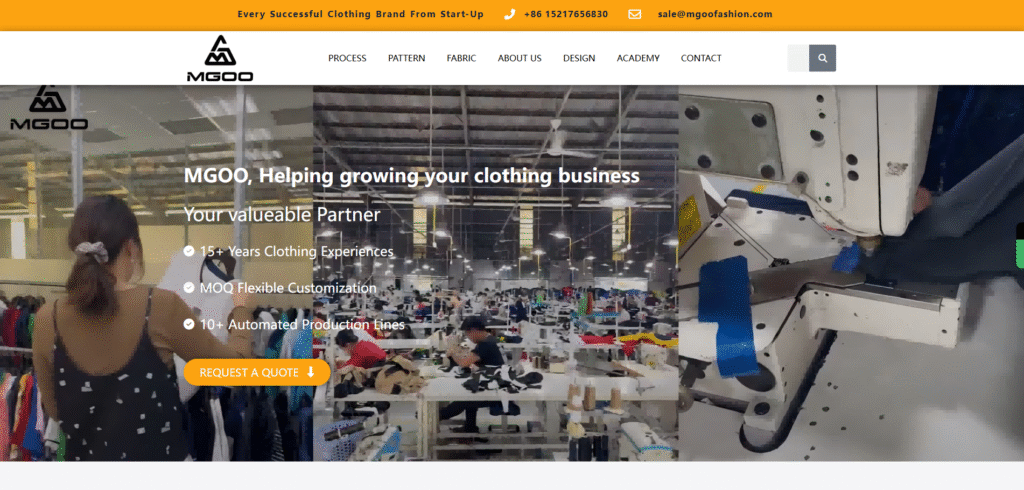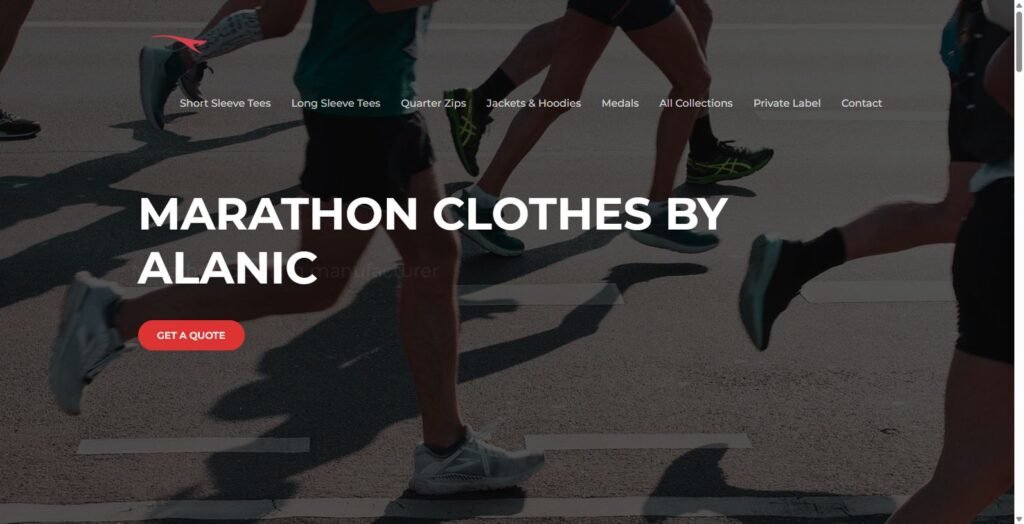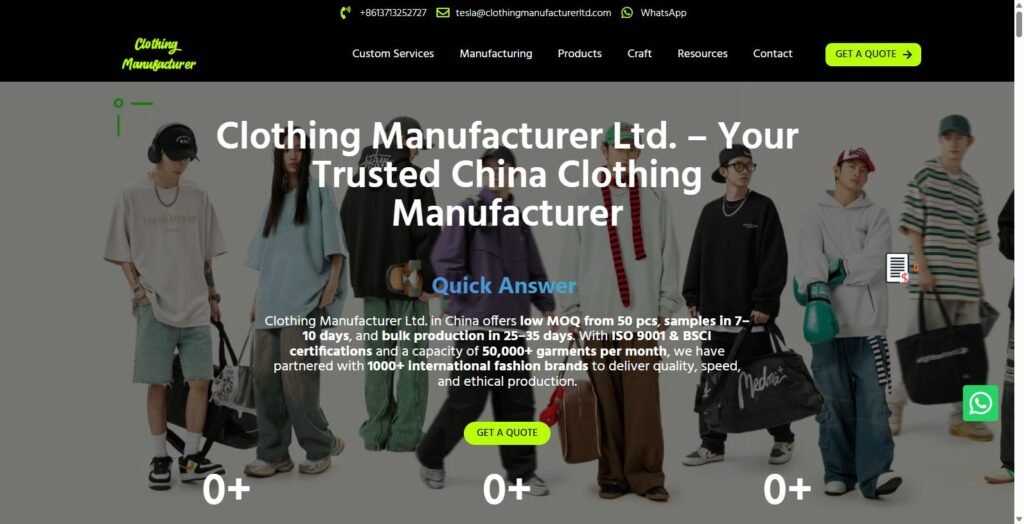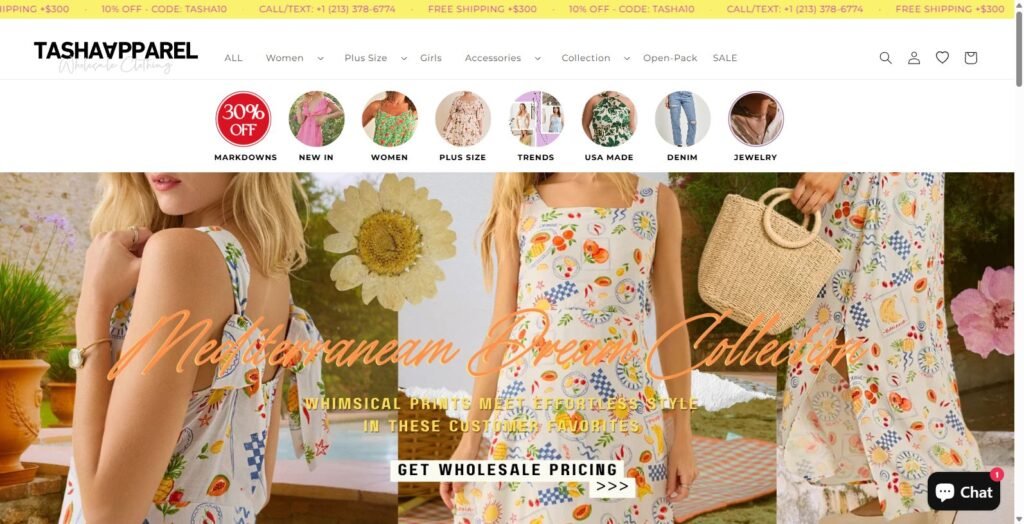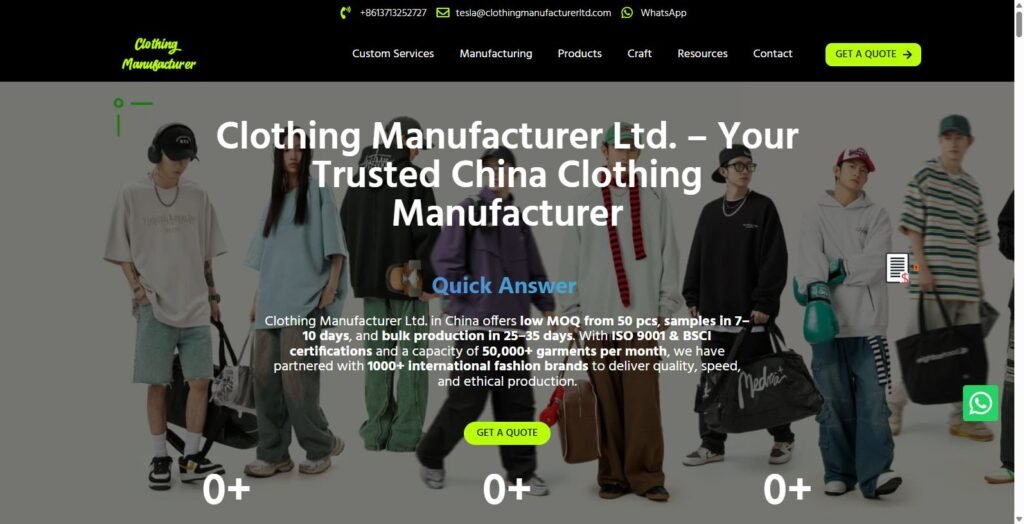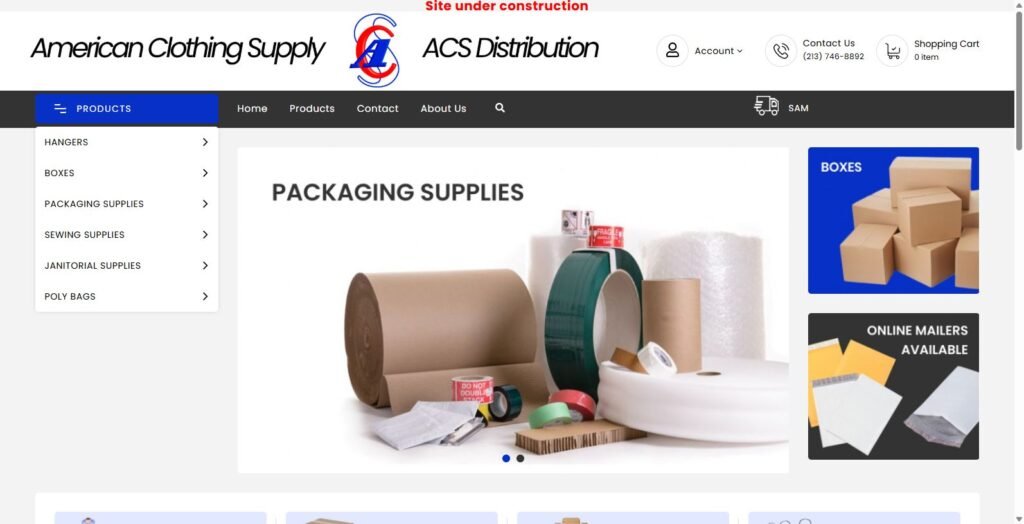Deciding on custom apparel equipment is not an easy task. The world is bustling with sophisticated technologies, confusing terms, and a wide range of prices. This often leads to analysis paralysis for many business owners.
 This guide is here to clear the air. We’ll introduce the core technologies in a plain and simple way, giving you a clear outline to select the most suitable cloth printing machine for your brand. Our thorough guidance at clothingmanufacturerltd.com will help you feel confident, whether you’re starting a new business or growing an established one. You will choose the right printing equipment from day one.
This guide is here to clear the air. We’ll introduce the core technologies in a plain and simple way, giving you a clear outline to select the most suitable cloth printing machine for your brand. Our thorough guidance at clothingmanufacturerltd.com will help you feel confident, whether you’re starting a new business or growing an established one. You will choose the right printing equipment from day one.
Machines Types Overview
To make the best choice, you first need to understand the main technologies. Each type of cloth printing machine has unique strengths and is best for different applications. Learning these basics is your first step toward building a successful printing operation.
Direct-to-Garment (DTG) Printing
DTG printing works like an inkjet printer, but for fabric. It applies water-based inks directly to the garment, where the fibers absorb the colors. This method excels at replicating precise, full-color designs, handling photorealistic images and complex gradients superbly.
It’s very beneficial for on-demand printing and small to medium batches with complex designs. However, it has downsides: it’s a relatively slow method for bulk orders. It works primarily with natural fibers, especially 100% cotton. Dark garments require a pre-treatment solution before applying the ink, which is necessary for proper adhesion.
Direct-to-Film (DTF) Printing
DTF printing is a newer and highly versatile option. A specialized printer applies the design to a transparent transfer film. An adhesive powder is applied to the wet ink, then melted and cured. The film is then placed on the garment and applied with a heat press.
Its biggest advantage is its multimaterial capability; DTF works on cotton, polyester, blends, and even non-textile items. The colors are extremely vivid and the prints durable. The main downside is the multi-step production process, and the transfer can feel slightly thicker on the garment compared to DTG prints.
Screen Printing Machines
This is the workhorse of the apparel industry. This traditional method uses a mesh screen to push ink onto the fabric. A separate screen is needed for each color, and they are applied in layers to build the final image.
For large quantity orders (usually 100+ identical items), this method is unmatched. It’s fast and has a low cost-per-print at scale. For companies focused on high-volume orders, traditional screen printing remains an economical choice. It’s also the best technique for special finishes, which we cover in our Ultimate Guide to Puff Screen Printing. However, the high setup cost and time per design make it uneconomical for small runs.
Dye-Sublimation Printing
Dye-sublimation uses a unique chemical process. The design is first printed onto special transfer paper. When heat and pressure are applied, the solid dye turns into a gas and permanently infuses into the fabric’s polyester fibers.
This technique is perfect for 100% polyester or high-polyester items like sportswear and performance apparel. The ink becomes part of the fabric, creating an incredibly soft, zero-hand feel and extreme durability. Its key limitations are that it doesn’t work on cotton and is only effective on white or light-colored textiles since the dye is translucent.

Heat Press Machines
A heat press is not a printer itself, but a major accessory for many printing methods, including DTF, sublimation, and vinyl transfers. These machines operate like large irons that use heat and pressure to permanently bond designs to fabric. They are also essential for curing DTG prints. A good-quality heat press is a basic, essential machine for nearly any clothing decoration business.
Quick Comparison
To help you make the decision, we have compared the critical functions of all the cloth printing machines in the table below.
| Machine Type | Best For (Application) | Fabric Compatibility | Cost Per Print (at scale) | Initial Investment |
|---|---|---|---|---|
| DTG Printer | On-demand, complex multi-color designs | Primarily Cotton & Natural Blends | Medium | High |
| DTF Printer | Versatility, vibrant colors on any fabric | Cotton, Polyester, Blends, Leather | Medium-Low | Medium-High |
| Screen Printing | Bulk orders (100+), simple designs | Most Fabrics | Very Low | Very High (for auto) |
| Dye-Sublimation | All-over prints, sportswear | 100% Polyester / Poly-Coated | Low | Low-Medium |
| Heat Press | Applying transfers (DTF, Vinyl, Sub) | Varies by Transfer Type | N/A | Low |
Which Machine is Suitable for Your Business?
Technical specifications don’t tell the whole story. The best cloth printing machine is the one that perfectly fits your business plan. Overspending on the wrong technology is a common and costly mistake. From our experience with startups, the key is matching your investment to your initial customer base and production needs.
For the Side Hustle & Etsy Seller
As a new entrepreneur, you should focus on low startup costs and flexibility. You need to produce one-off custom items without holding inventory, testing designs and fulfilling orders as they come in.
We recommend starting with a high-quality Heat Press and sourcing pre-made DTF transfers from a trustworthy supplier. This model requires the lowest initial investment and gives you access to professional, full-color prints for any fabric type. If you have a slightly larger budget, a small desktop DTF printer provides greater control over the production process.
For the Online Brand & On-Demand Store
For an established online brand or print-on-demand business, print quality, consistency, and versatility are crucial. You need a reliable cloth printing machine to handle a wide variety of designs efficiently. Your brand’s reputation depends on the quality of every garment you ship.
A professional DTG printer is an excellent choice if your brand focuses on cotton products like premium t-shirts and hoodies. For maximum fabric versatility and vibrant prints on darks, a robust DTF printing system is often the superior investment. It allows you to easily expand your product line to include polyester and blended fabrics.
For the Bulk Order & Uniform Supplier
If your business sells in large quantities to schools, corporate clients, or events, your key features are speed, consistency, and the lowest possible cost-per-print. Profitability in this space comes from efficiency and economies of scale.
The surest way ahead is an automatic screen printing press. The initial investment is significant, but the high speed and low ink costs for large runs provide an unmatched return. We’ve seen brands struggle when they over-invest in high-volume equipment before having the orders to support it, but for a bulk supplier, this is the must-have tool. Companies like the leading manufacturers of screen printing equipment such as M&R provide solutions built for this scale.
7 Key Factors Before Buying

Choosing the correct machine type is just part of the process. Consider these important operational factors before you buy to avoid common pitfalls and ensure your purchase is sound.
-
Total Budget & Ownership Cost
Your budget must extend beyond the machine’s price tag. Factor in ongoing costs like ink, software subscriptions, pre-treatment solutions, transfer films, maintenance kits, and other consumables. -
Space & Environment
These are not desktop office machines. A commercial cloth printing machine requires a dedicated, well-ventilated space. DTG printers need a climate-controlled environment with stable humidity to avoid print head issues. -
Ink & Fabric Compatibility
Be certain that the machine’s ink system is designed for the fabrics you intend to print on. Using the wrong ink-fabric combination results in low vibrancy, poor feel, and prints that wash out prematurely. -
Production Speed & Volume
Be realistic about your current and near-future needs. It’s unwise to buy a machine that can print 500 shirts an hour if your weekly sales average 50. Match the machine’s output to your order flow to avoid tying up too much capital. -
Software & Workflow
Assess the RIP (Raster Image Processor) software that comes with the machine. Is it user-friendly? A clunky or complicated workflow can become a major bottleneck in your daily production. -
Maintenance & Support
What daily, weekly, and monthly maintenance does it require? Digital printers require consistent care. Ensure the manufacturer or dealer offers accessible and prompt technical support for when issues occur. -
Scalability & Future Growth
Consider if the machine can grow with your business. Is it upgradable? Will it become obsolete in a year, or can it be a cornerstone of your production for years? The global digital textile printing market is expected to expand, signifying an industry shift towards flexible machines like DTG and DTF for shorter runs.
The Full Printing Workflow
A common misconception is that the cloth printing machine does all the work. In reality, it’s just one component in a multi-stage process. Understanding this full workflow is essential for producing professional, retail-quality garments.
From our experience, mastering each stage separates amateurs from professionals. A properly cured DTG print will feel soft and integrated into the fabric, while an under-cured one might feel tacky or wash out quickly. These are details you learn to perfect over time.
The 4 Steps of a Professional Print Job
-
Artwork Preparation: It all begins with the digital file. Designs must be properly formatted (e.g., high-resolution raster or vector) and color-separated for screen printing. Poor quality input yields a poor quality print.
-
Garment Pre-Treatment: For DTG printing on dark garments, applying an even layer of pre-treatment solution is critical. This step ensures the white underbase is bright and the color layer is vibrant and washable.
-
Printing: This is the main event where your chosen cloth printing machine applies the ink or transfer to the garment. Proper platen selection and garment placement are key to a straight, well-placed print.
-
Curing/Drying: This final step is arguably the most significant. The ink must be cured at the correct temperature and for the right amount of time using a heat press or tunnel dryer. Improper curing is the number one cause of print failure and wash-out.
Conclusion: Think Carefully About Your Investment
Choosing the right cloth printing machine is a foundational decision for your apparel business. There is no single “best” machine, only the one that best aligns with your business model, production volume, budget, and product offerings. By understanding the core technologies and honestly evaluating your needs, you can make an investment with confidence, laying the groundwork for long-term business success.

FAQs
What would be the most suitable cloth printing machine for a beginner?
For most beginners, a combination of a quality heat press and ordering DTF (Direct-to-Film) transfers is the most cost-effective and flexible way to start. This minimizes the initial investment while providing access to professional, full-color prints. If you have a slightly larger budget, a desktop DTF printer offers more control.
How much does a professional cloth printing machine cost?
The cost varies dramatically. A good heat press can cost a few hundred dollars. Desktop DTF or sublimation printers range from 1,000to5,000. Professional DTG machines start around 15,000,andautomaticscreenprintingpressescaneasilycost30,000 or more.
Can I print on dark-colored clothes?
Yes. DTF and screen printing are excellent for dark garments because they lay down an opaque white underbase first, allowing colors to pop. DTG printing can also print on darks but requires pre-treatment and white ink, which increases the cost and complexity. Dye-sublimation does not work on dark fabrics.
What kind of maintenance do these machines require?
Digital printers like DTG and DTF demand daily maintenance. This often includes nozzle checks, print head wiping, and system cleaning to prevent ink clogs, which is a common and costly issue. Screen printing presses require thorough cleaning of screens and squeegees after each run. Always follow the manufacturer’s specific maintenance schedule.
Is it better to buy a machine or outsource printing?
Outsource if your volume is low or you are still testing business ideas. Consider buying a machine when your order volume becomes consistent and the cost of outsourcing starts to approach the potential monthly payments on equipment. In the early stages, partnering with a specialist, like a puff print hoodie manufacturer, can be a valuable strategy. While digital textile printing technology is advancing rapidly and making in-house production more accessible, outsourcing remains a smart, low-risk option for many businesses.



